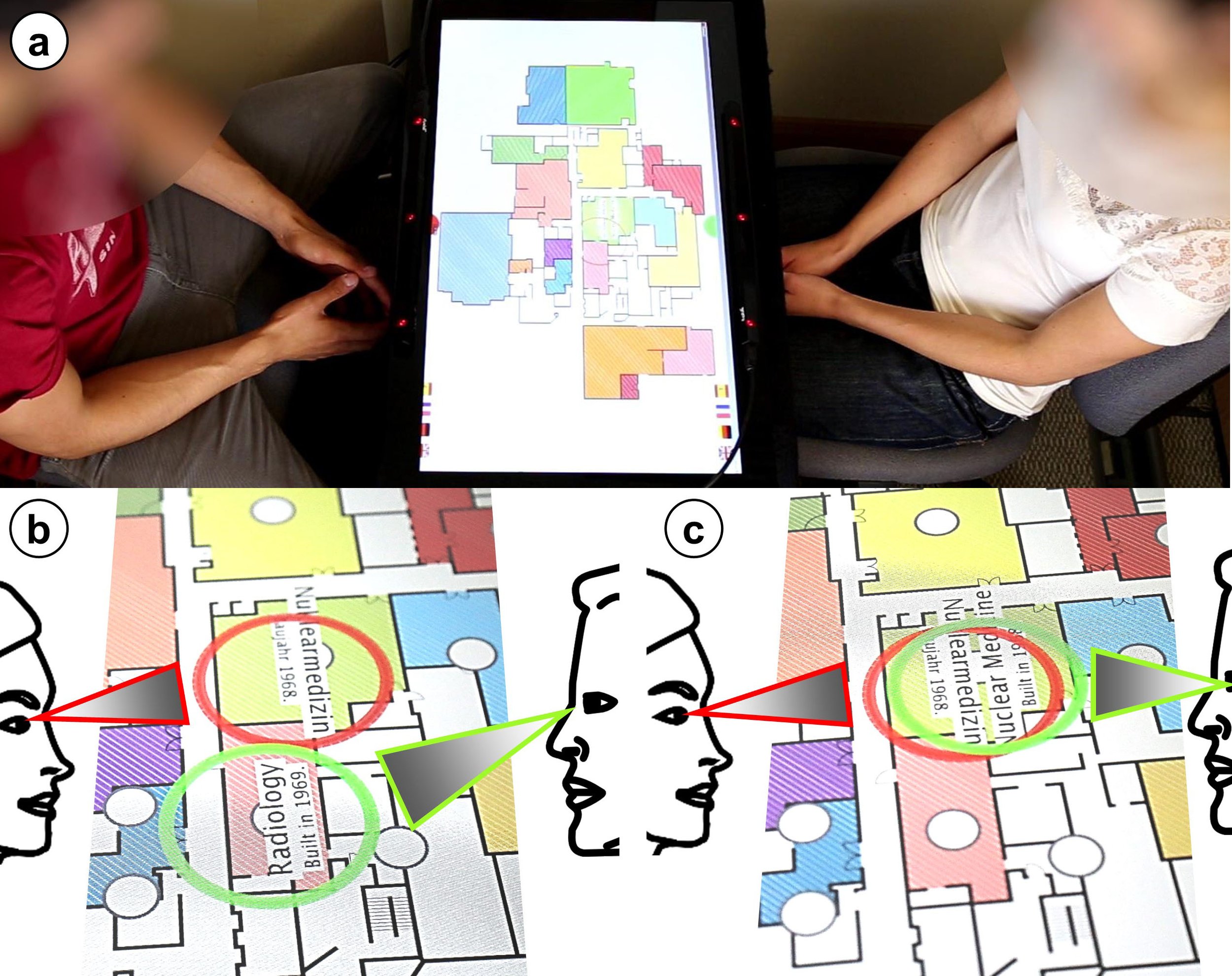Gaze and AI/ML
The eyes are a rich channel for nonverbal communication in our daily interactions. The appearance of the eyes has evolved to be especially visible to provide nonverbal cues to others. Unlike any other species, human eyes have a uniquely large, bright and clearly visible part of the eyes—the sclera. Our eye gaze has a dual function in social settings: to signal and to perceive. This increased conspicuousness of the eyes affords an observer the ability to discern one’s gaze direction easily, allowing for humans to engage in natural behaviours such as gaze following and joint attention.
Gaze has been explored to improve nonverbal communication in collaborative multi-user interfaces. Gaze visualisation is by far the most common approach for creating ‘gaze awareness’ (knowing what someone is looking at). By overlaying live gaze visualisations onto the interface or the physical world, it provides a complementary layer of nonverbal communication to an observer. Gaze awareness is especially beneficial in remote settings where the eyes are typically absent.
thinking about new features
leveraging AI/ML techniques
In GEMINI, we will investigate how gaze input can support multi-user interaction that augments natural human behaviour and is scalable.
Real-time Head-based Deep-learning Model for Gaze Probability Regions in Collaborative VR
Riccardo Bovo, Daniele Giunchi, Ludwig Sidenmark, Enrico Costanza, Hans Gellersen, Thomas Heinis
ETRA ‘22: ACM Symposium on Eye Tracking Research and Applications


